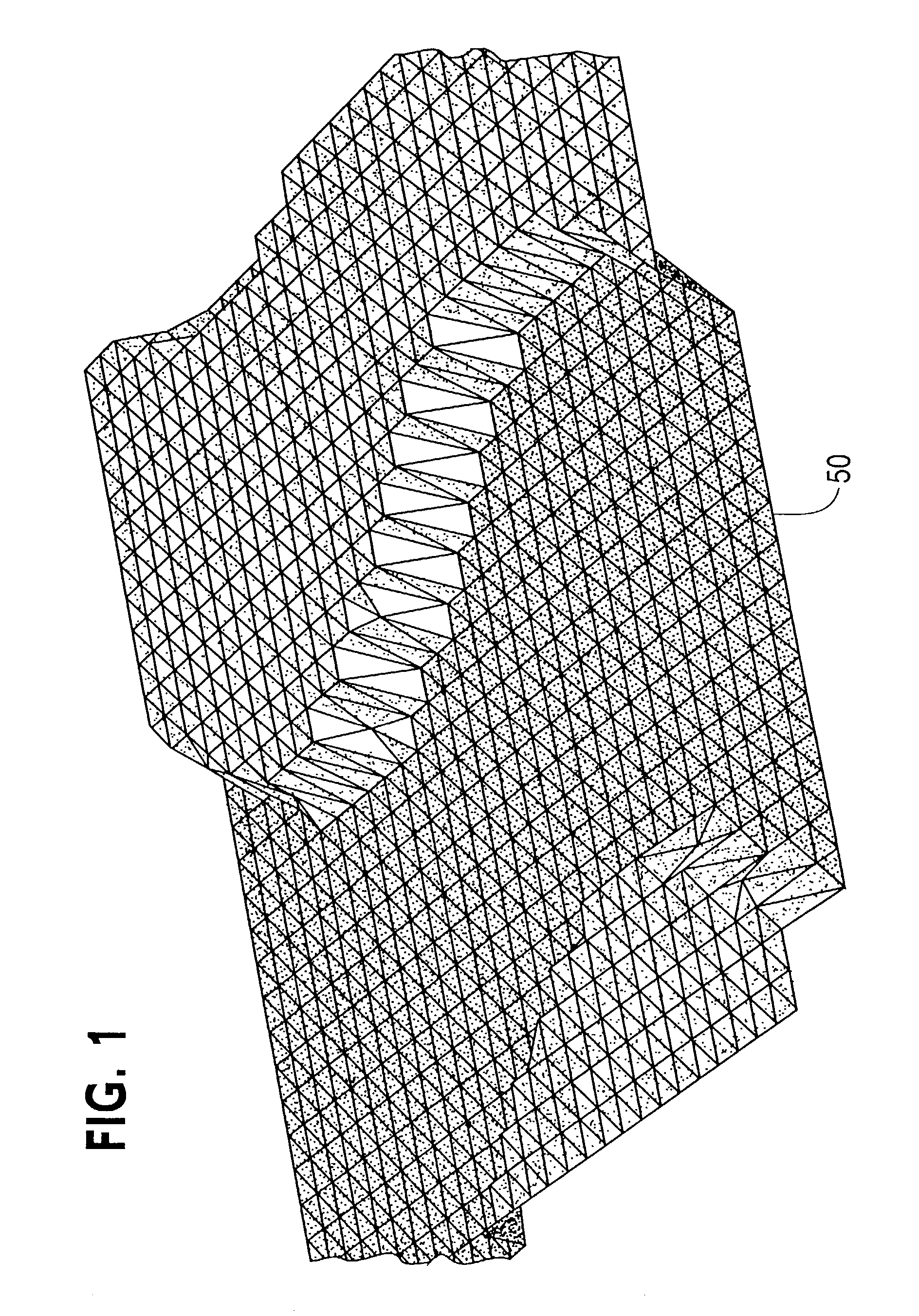System of feature-based surface mapping
a surface mapping and feature-based technology, applied in the field of displacement or offset surfaces, can solve problems such as undersampled or coarse offset surfaces, artifacts that are particularly noticeable, shadowing and reflection are also problematic,
- Summary
- Abstract
- Description
- Claims
- Application Information
AI Technical Summary
Benefits of technology
Problems solved by technology
Method used
Image
Examples
Embodiment Construction
[0052]FIG. 2 shows a flowchart of a method according to an embodiment of the invention. Initially, an object is input 60. The object is sampled 62 in the height field resulting in a height map. Following the sampling 62, the method detects features 64 in the height map. Based on the features, samples below a threshold are discarded 66. The remaining feature points are adjusted 68 and new points are added, possibly repeated k times. Finally the feature points are used to build a smaller triangulation 70.
[0053]FIG. 3 shows an original surface 80 including a sinusoidal wave displacement area 82 colored white, and a non-displaced area 84 colored black. The displacement area 82 is an area that will be offset by a displacement function. The non-displaced area is an area of the original surface 80 that remains unchanged. The present invention offsets a surface, as for example original surface 80, by analyzing a height field to find details of the height field. An original surface is divide...
PUM
 Login to View More
Login to View More Abstract
Description
Claims
Application Information
 Login to View More
Login to View More - R&D
- Intellectual Property
- Life Sciences
- Materials
- Tech Scout
- Unparalleled Data Quality
- Higher Quality Content
- 60% Fewer Hallucinations
Browse by: Latest US Patents, China's latest patents, Technical Efficacy Thesaurus, Application Domain, Technology Topic, Popular Technical Reports.
© 2025 PatSnap. All rights reserved.Legal|Privacy policy|Modern Slavery Act Transparency Statement|Sitemap|About US| Contact US: help@patsnap.com



